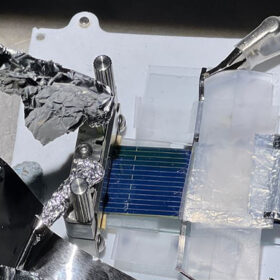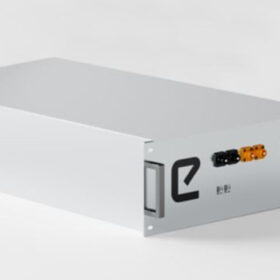PV cell integrating molecular thermal storage tech achieves 14.9% solar utilization efficiency
Scientists in Sweden have integrated a PV device with a molecular solar thermal (MOST) energy storage system, which acts as as a solar cell optical filter and cooling agent. The proposed combination achieves a 0.2% higher PV efficiency and solar storage efficiency of 2.3%.
The Hydrogen Stream: Poland unveils hydrogen strategy
The Polish government has outlined its main objectives for the development of hydrogen, while Tyczka Hydrogen says a damaged compressor from Maximator Hydrogen caused a recent incident at one of its filling stations in Germany.
Energy-storing carbon fibre composites pave the way to weightless batteries
Building on research work at Sweden’s Chalmers University of Technology, Sinonus has developed carbon fiber-based structural batteries that not only store energy but also become an integral part of a product’s structure. Their possible span of energy density is said to be around 25-50% of a conventional lithium-ion battery at current technology level.
The Hydrogen Stream: Hydrogen power plants feasible but inefficient, says CATF
The Clean Air Task Force (CATF) says in a new report that dedicated clean hydrogen production and use is often a costly, inefficient decarbonization strategy for the power sector, while American Airlines says it has signed a deal with ZeroAvia for 100 hydrogen-electric engines.
Solar carports on the rise in Europe thanks to mandates
GoodWe has cut in half the time necessary to install a waterproof solar carport, according to the company’s Senior International Business Development Director of BIPV, Apollo Chai. He notes that the manufacturer has also already launched vertical and horizontal solar shades to address current gaps in the European market.
Midsummer to begin production of thin film cells in southern Italy after summer
The “largest European thin-film solar cell manufacturing plant” will begin operation after receiving production certification. Midsummer executive Erik Olsson tells pv magazine Italy that production is expected to start after the summer, at a time of sharp increase in demand for thin-film photovoltaic cells from the commercial and industrial solar segment.
ChatGPT can tell scientists how to build better perovksite solar cells, research says
An international research group has sought to build for the first time a perovskite solar cell with the help of ChatGPT. The experiment helped the scientists identify a series of materials for the cell composition and the results were cells with a higher power conversion efficiency compared to that of reference cells built without the material proposed by the large language model.
Swedish startup unveils tape-based stringer for back contact solar modules
Sticky Solar Power is taking orders for industrial-scale versions of its novel room-temperature cell interconnection system, which is reportedly well-suited for back-contact (xBC), perovskite, and heterojunction cell technologies.
Zinc-ion batteries: a less volatile alternative?
At a time of growing demand for battery energy storage, pv magazine spoke with Eloisa de Castro, CEO of Enerpoly, a Swedish company preparing to launch the world’s first zinc-ion battery megafactory on its home turf. Having solved rechargeability issues, the company expects its safe and sustainable zinc-ion batteries, which rely solely on a European supply chain, to increase their market share in the years to come.
The Hydrogen Stream: Climate group dampens hopes for blue hydrogen
Solutions for Our Climate (SFOC) says in a new report that blue hydrogen might not be an effective climate solution, while TotalEnergies and its partners have agreed to explore green hydrogen potential in Tunisia.










